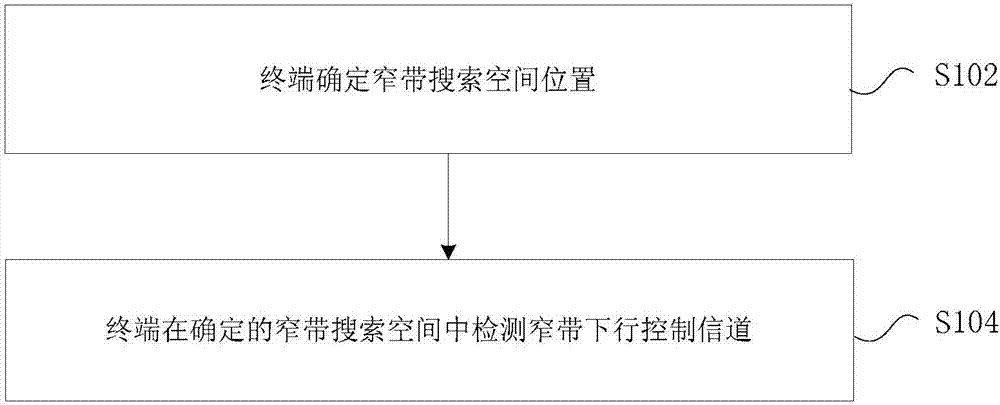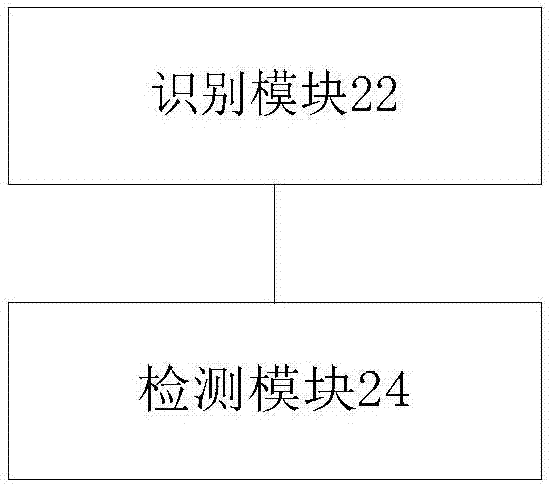Determining method and device for search space in narrowband system
A search space and determination method technology, applied in the field of communication, can solve the problem that the control channel search space structure is not suitable for NB-IoT narrowband system
- Summary
- Abstract
- Description
- Claims
- Application Information
AI Technical Summary
Problems solved by technology
Method used
Image
Examples
Embodiment 1
[0229] This optional embodiment is aimed at the manner in which the search space continuously occupies subframes or subframe sets.
[0230] At this time, candidate sets of different repetition times in the search space correspond to the same starting subframe in the time domain. At this time, the base station side configures the repeated set {R1, R2, R3, R4} or only configures R4, and the rest are multiplied by the factor k, such as k=1 / 2, 1 / 4, 1 / 8, etc. The aggregation level can be fixed, or different aggregation level sets can be determined according to different coverage types. For example, at this time, the base station configures the USS starting subframe of the terminal through RRC to be located in the first subframe of period C=640ms, and at the subframe position of 10*SFN+subframeindex mod 640=0. At this time, the coverage type is medium coverage type, and Rmax=R4=32 is configured. At this time, the remaining R3-R1 are determined to be 16, 8, and 4 by factors k=1 / 2, 1...
Embodiment 2
[0241] This optional embodiment is aimed at the manner in which the search space continuously occupies subframes or subframe sets.
[0242] At this time, the candidate sets with different repetition times in the search space are not all corresponding to the same start subframes in the time domain, and the candidate sets corresponding to the non-maximum number of repetitions have multiple start subframes in the search space. At this time, the base station side configures the repeated set {R1, R2, R3, R4} or only configures R4, and the rest are multiplied by the factor k, such as k=1 / 2, 1 / 4, 1 / 8, etc. The aggregation level can be fixed, or different aggregation level sets can be determined according to different coverage types. For example, at this time, the base station configures the USS starting subframe of the terminal through RRC to be located in the first subframe of period C=640ms, and at the subframe position of 10*SFN+subframe index mod 640=0. At this time, the coverag...
Embodiment 3
[0252] This optional embodiment is aimed at the manner in which the search space continuously occupies subframes or subframe sets. And the search space configured in different scenarios is different.
[0253] Among them, in the Inband scenario, there are many unavailable REs (Legacy PDCCH, CRS, etc.), which support a relatively large AL. In the standalone / guardband scenario, an aggregation level including AL=1 is supported. For example: Inband scenario supports AL=2, 4, 8, 16, and standalone / guardband scenario supports AL=1, 2, 4, 8.
[0254] The configuration method is the same as implementation 1 or 2.
[0255] Use different AL sets for different coverage levels, use different R sets determined by Rmax, the starting subframes of different Rs are the same, and the total number of candidate sets is not greater than the number of blind detection times for a single subframe in Legacy LTE.
[0256] Among them, when the search space is determined by continuously occupying subfra...
PUM
 Login to View More
Login to View More Abstract
Description
Claims
Application Information
 Login to View More
Login to View More - R&D
- Intellectual Property
- Life Sciences
- Materials
- Tech Scout
- Unparalleled Data Quality
- Higher Quality Content
- 60% Fewer Hallucinations
Browse by: Latest US Patents, China's latest patents, Technical Efficacy Thesaurus, Application Domain, Technology Topic, Popular Technical Reports.
© 2025 PatSnap. All rights reserved.Legal|Privacy policy|Modern Slavery Act Transparency Statement|Sitemap|About US| Contact US: help@patsnap.com



